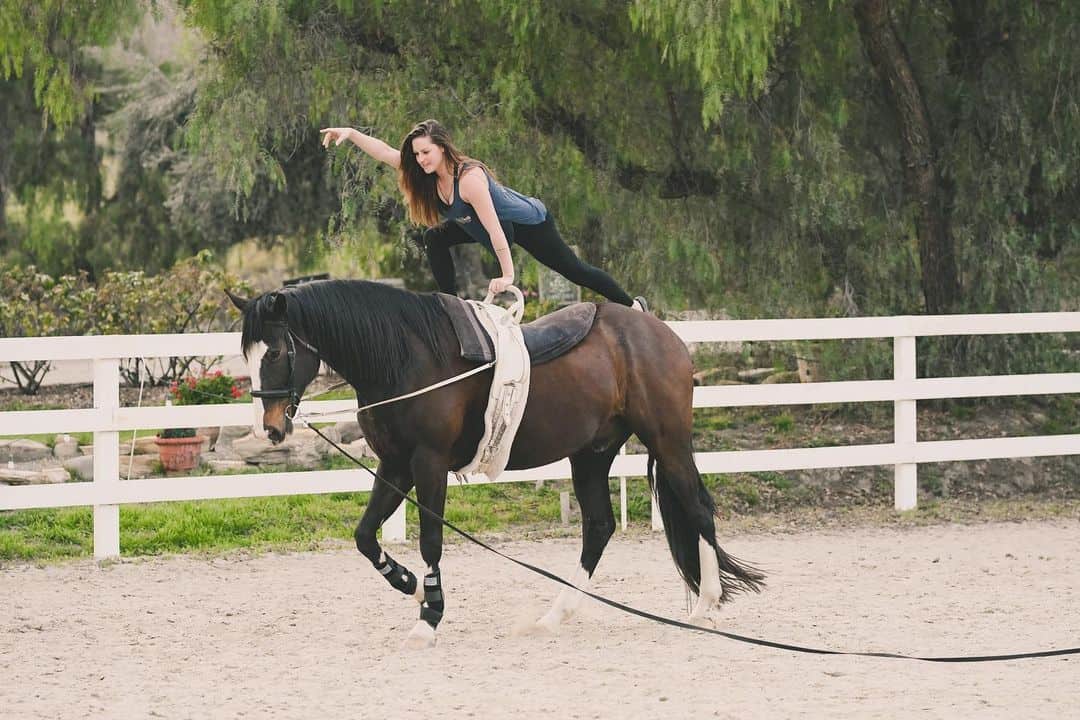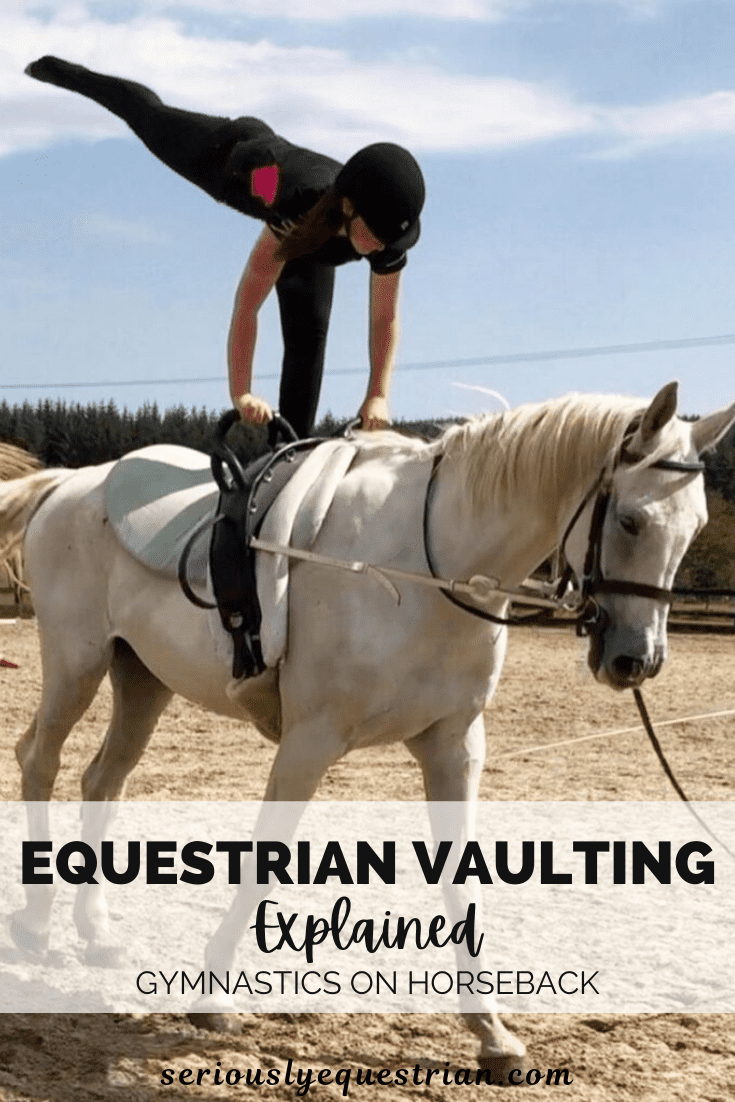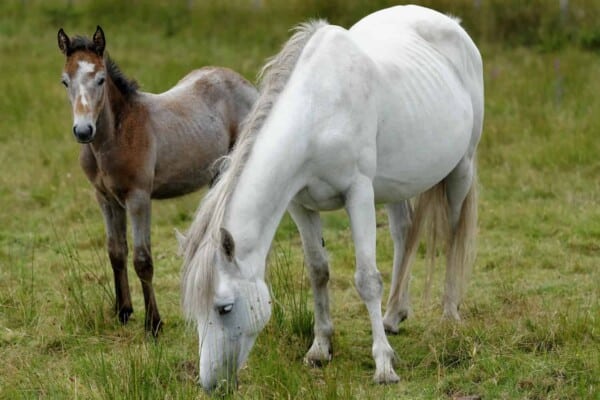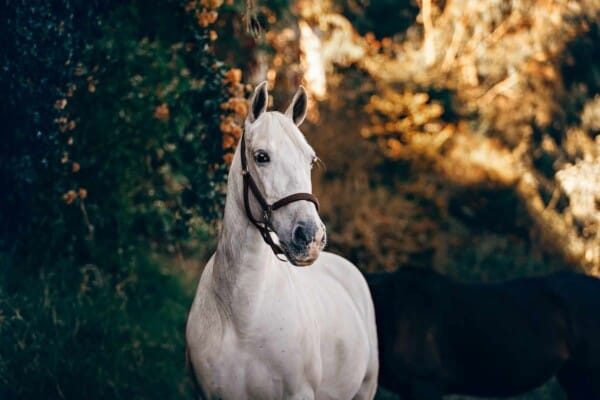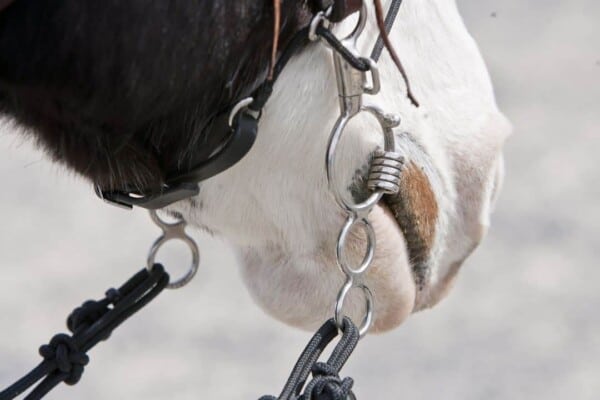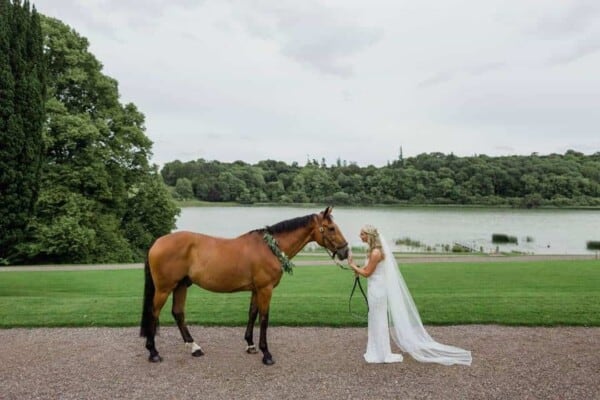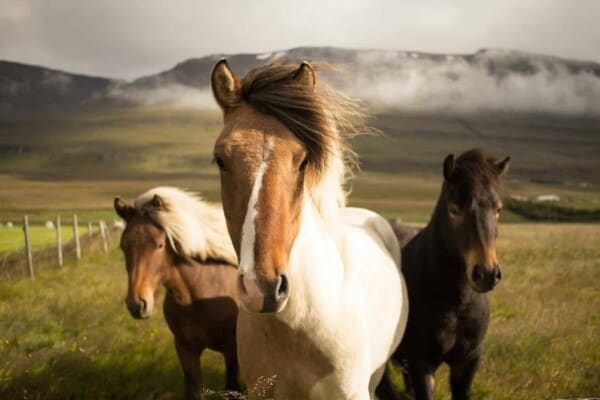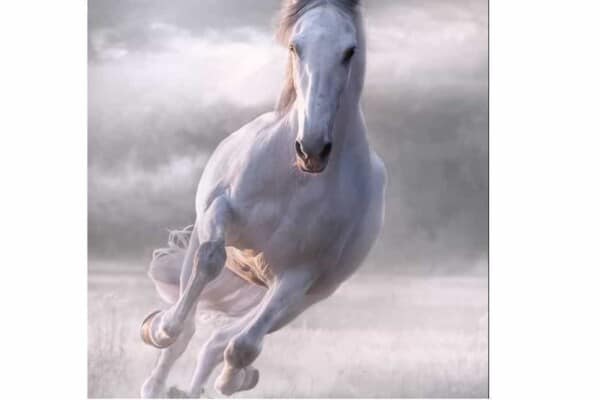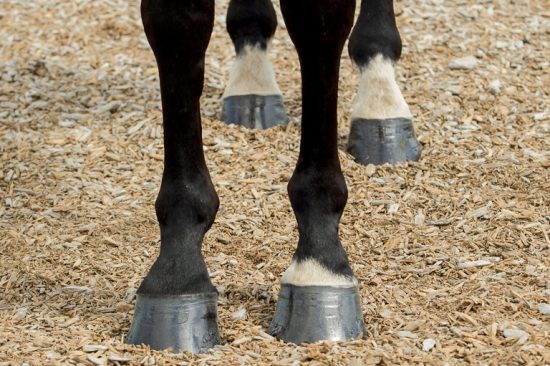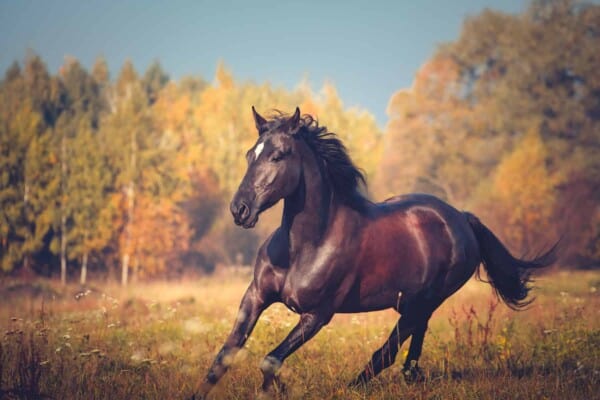What is horse Vaulting?
Horse vaulting (commonly referred to as equestrian vaulting) is a specialized and competitive equestrian sport in which riders perform acrobatic and dance like maneuvers on horseback. It is one of the six FEI disciplines and its roots can be traced back to the ancient Roman games.
Vaulting combines dancing, gymnastics, and riding into one sport that is often spectacular to watch. Specific moves are performed on top of the horse and often involve multiple team members at once. The high level of technical skill required to perform such maneuvers requires years of training to perfect. Riders must have excellent balance, strength, coordination, flexibility, and creativity in order to reach the top of the sport.
The highest level of vaulting competition takes place at the FEI World Cup Vaulting Finals and World Equestrian Games.
History of Vaulting
Vaulting dates back 2,000 years ago to ancient Roman times when acrobatics and artistic riding was performed on the back of a moving horse. There is also some evidence of a similar sports taking place in ancient Crete but using bulls instead of horses.
Like many other equestrian sports, vaulting began evolving quickly as a sport when it was adopted by the military. Military commanders saw vaulting as a useful training tool to help soldiers learn how to skillfully wield weaponry while travelling on horseback at the same time.
In the renaissance period during the 17th century vaulting became popular among the wealthy noblemen who would show off their agility on horseback by performing various different techniques. The sport was known as La Voltige and was popular in Italy and France. The German theologian Johannes Valentinus Andreae saw the sport here and is credited with bringing the sport to Germany where it became known Voltigieren.
After the Second World War Vaulting experienced a notable rise in popularity . In the 1950’s it reached America thanks to Californian horsewoman Elizabeth Searle who saw the sport in Europe and thought it would be fun for the children in her local pony club. In the 1970’s participants from the USA and Germany took part in international exchanges as the sport quickly started becoming more organized. The sport was recognized by the FEI in 1983 and has continued to rise in popularity in terms of spectators and participants since then.
Breeds used for horse vaulting
To be suitable to become a vaulting horse a breed must possess certain characteristics. A vaulting horse needs to be a larger, heavier type with a quiet, calm temperament. Unlike springy sports horses, vaulting horses need to have a smooth canter. This makes it easier for the vaulters to perform their moves. Because people are continually moving on top of and, on and off the horse, it needs to have a very strong back. The canter and transitions must be smooth and rhythmic.
Larger, heavier horses are more suited as they tend to have smoother gaits and greater strength to carry multiple people while continuing to canter on a circle for extended periods. The sport isn’t limited to a specific breeds, any horse that possesses the right temperament, gaits, and build can be used. Animals with draft or warmblood breeding are often seen in vaulting. Irish Draughts, Morgans, Appaloosas, Quarter Horses, are some breeds that can be regularly seen at vaulting events.
Competitive Vaulting
Vaulting has both individual and team competitions. Teams have at least five members. Competitors perform their movements while the horse trots (for beginners) or canters, (more advanced) on a 15-meter circle. Each individual or team performance takes around six minutes. Vaulters receive scores of between 1 and 10 for each move, taking into consideration the technique, security, and overall performance.
Competitive vaulters must adhere to certain safety rules. A team will wear matching unitards that have long sleeves and legs that fit skin tight. This is so nothing is loose that can get caught on the horse’s tack. No added accessories are allowed, such as belts, hats, or capes. Outfits can have sparkly embellishments, but these must be level with the fabric of the unitard.
Equipment
A vaulting horse wears a specially adapted lunging roller. This roller is stronger than a saddle and helps distribute the rider’s weight more evenly. It has large handles that the rider uses to mount the horse and perform moves. Also attached to the surcingle are large leather loops the riders use as stirrups. Under the roller, an extra-large, well-cushioned pad is used to protect the horse’s back. The horse wears a standard bridle with side reins. The lunger uses a standard lunge rope and whip to ensure that the horse remains at the required gait. To protect the horse’s legs tendon boots or bandages are normally used.
Horse Vaulting moves
In every competition, the performance must include several compulsory moves.
- Mount – This is a basic, but essential move to master. The rider must move from the center of the lunge circle to the moving horse, hold the handles of the surcingle, and vault on.
- Basic seat – This move involves the rider sitting astride the horse, stretching the legs down with their toes pointed at the ground and holding their arms out to the sides.
- Flag – A flag is a move where the rider kneels on the horse and then stretches one arm and one leg out.
- Mill – The rider is required to move a leg over the horse, in a stretched out position and pointed toes. The maneuver must be repeated with every step the horse takes.
- Scissors – This move starts in the basic seat position. The rider then pushes themselves into a handstand. While doing a handstand the rider must turn so their hips face the lunger before returning to the basic seat position.
- Stand – The rider stands upright on the horse with their arms stretched out to the sides.
- Flank – The flank begins in the basic seat. From there the rider moves into a handstand, followed by positioning their legs in an upside-down V. Once in this position, the rider must lower themselves down the side of the horse. The move is completed by the rider moving their legs to the opposite of the horse, and pushing off to land feet first on the ground.
As riders advance their abilities, moves become more complex and can involve more than one person.
Para Vaulting
The benefits of equestrian sports for impaired and special needs people are now well known. Horses provide such people with unique opportunities for social interaction and personal growth. Horse riding is also a great way of improving mobility and helping to condition people who may struggle in other settings.
Para Dressage and Para Driving are both now part of the Paralympic games and are the only sports in the games that includes a live animal. Para Vaulting is a much smaller sport in terms of popularity and is not yet part of the FEI recognized disciplines or the Paralympic games. However there is a number of para athletes who are passionate about developing the sport and continue to promote the sport in their own regions.
Interesting facts
- In ancient times vaulting used bulls instead of horses.
- 2,000 years ago, the Roman Games included vaulting, using horses.
- Despite its popularity, vaulting has only featured in one Olympic Games – Antwerp, 1920.
- The first appearance of vaulting at the World Equestrian Games took place in Stockholm in 1990.
- The first FEI Vaulting World Cup took place in 2011.
- Vaulters do not wear helmets, as they can be a safety hazard.

